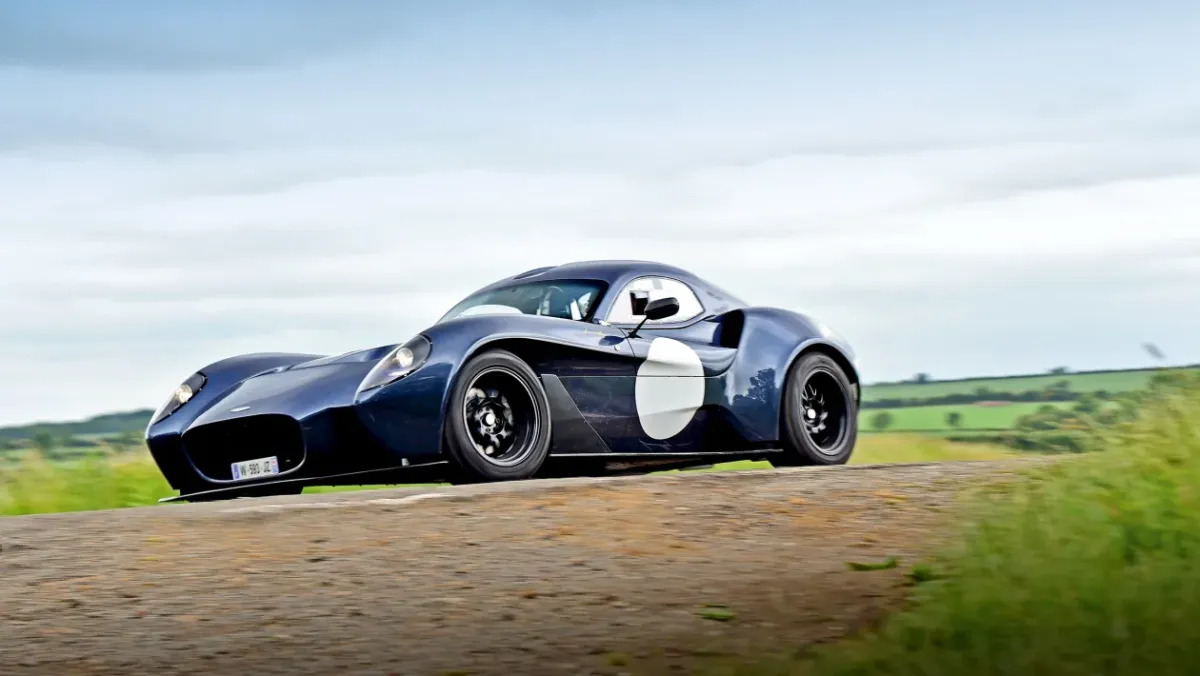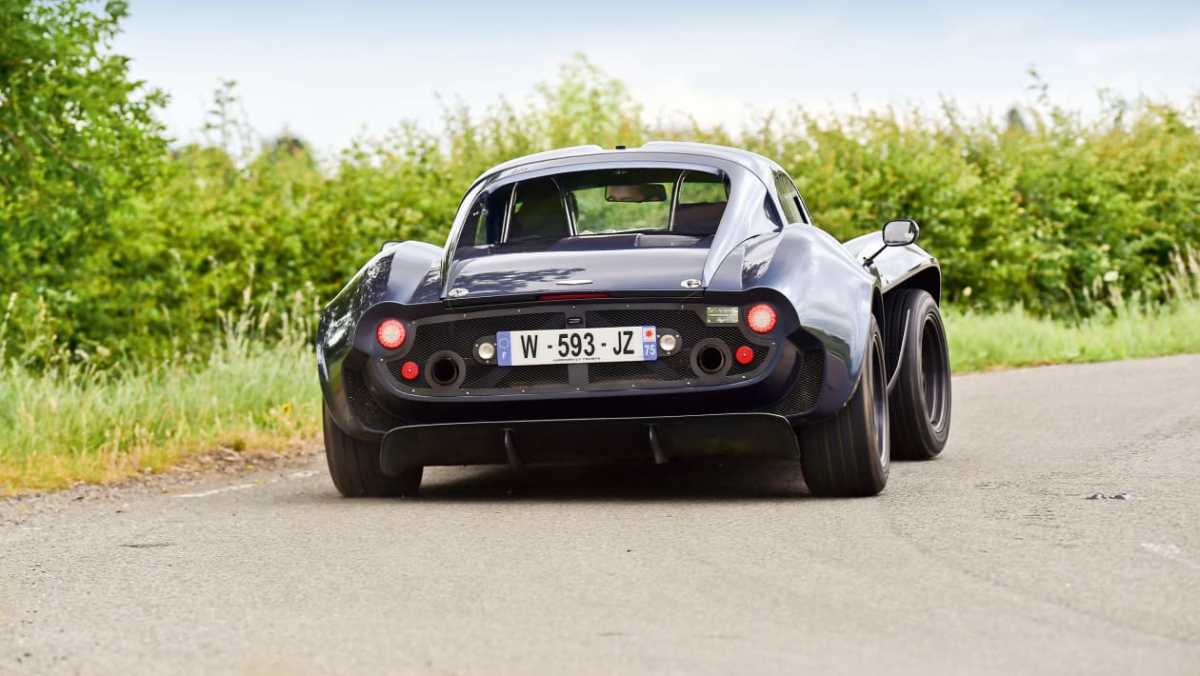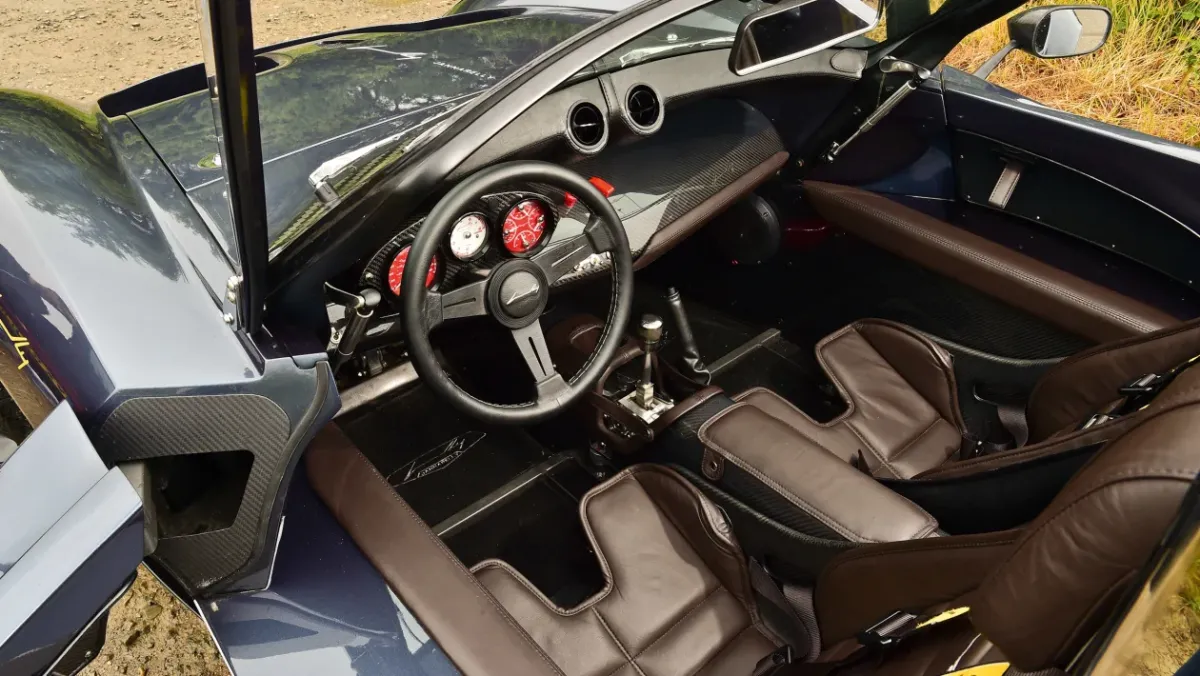A genuinely different and engaging back-to-basics sports car that can stand up against the established players
| Engaging performance, involving handling, unique styling | |
| A few useability quirks that later cars should iron out |
The small-volume, high-performance sports car battlefield is divided along two fronts in 2022. On the one side you have the track specials such as the Radical Rapture and Revolution A-One, as driven by Adam Towler. Awesomely capable on track, obsessively engineered, and occasionally offered with just enough on-road ability for a weekend drive, provided you don’t mind wearing an Arai everywhere you go.
On the other front is the burgeoning market for ultra-exclusive hypercars. Exotic carbonfibre bodywork, possibly electric power, most likely a four-figure output. They’re hyper-rare, hyper-expensive, and you’re hyper-unlikely to see one being driven on the roads they’re purportedly designed for.
In the middle of all this you’ll find the Jannarelly Design‑1. Lightweight, compact and driver-focused, it shares plenty with those trackday specials, but it’s also resolutely road-biased, capable of dealing with potholes and rain storms. Jannarelly also offers a tailored ordering process and the kind of close relationship between factory and client that you’d expect of the exotic supercar market, despite the $96,000 Design-1 being priced at a level that prioritises enjoyment rather than investment.

On paper it also has the kind of specification you might put together if asked to create the perfect sports car. A kerb weight under a ton, a mid-mounted engine of more than four cylinders, a manual gearbox, a limited-slip differential, and steering unsullied by power assistance.
The 950kg weight comes courtesy of a tubular space frame wrapped in glassfibre panels, and a footprint shorter than an MX‑5’s. The engine is an unusual choice: a Nissan VQ35DE 3.5-litre V6, delivering 321bhp and 274lb ft of torque and best known for sitting up front in a 350Z. Meanwhile the unassisted steering has been sourced from perhaps the best place it possibly could have been: a Lotus Elise. Suspension is double wishbones at each corner, with motorsport-sourced rod ends and pushrods.
When you know the layout, you realise the vintage styling is actually quite deceptive; with no prior knowledge you’d assume the Design-1 was front-engined. The details are a mix of 250 Testarossa and Aston DBR1, mixed in with some modernity thanks to ground-hugging splitters and sills and a prominent rear diffuser. The design of the 16-inch wheels is contemporary too, but the tyres, 50-profile up front and 45s at the rear, again exude that 1950s sports car look in a way lower-profile rubber simply wouldn’t.
At its most basic the Design-1s is an open-topped roadster with a low, full-width flyscreen not unlike that of the aforementioned Testarossa, but there are three other configurations available: the roadster layout but with a proper windscreen, a targa-style arrangement with a buttressed hoop behind the cabin, and, as seen here, a full hard-top, which opens canopy-style on a pair of gas struts.

Open the vestigial door, drop a foot onto a step at the front of the seat cushion (which turns out also to be the lever for adjusting the seat fore and aft), grab the roll hoop with both hands, hoik the other leg over, and slide down into the seat as you would in a Caterham. Once you’re in you certainly know it. The seating is firm, the sides of the cockpit intimate, though with large cut-outs in the doors there is plenty of elbow room, and your feet are well accommodated over the floor-hinged pedals too. The view forward, first past the Nardi steering wheel, then the custom instruments and finally over the sculpted front wings, is probably the best flavour yet of that vintage feel implied by the styling.
The Nissan V6 fires quickly to life and sends a fizz through the car’s body, unmuffled by excess sound insulation. Clutch and gearshift are weighty but the latter slots cleanly, and with modern fuel injection and gearbox technology there are few quirks to have to work around, no misfuelling chunters or recalcitrant ratios.
With so little weight to push along, the Design-1 positively hurls forwards in the lower gears, almost overwhelming your senses with induction, exhaust and wind noise and responses to the ground underneath. The bombardment of feedback fills you with that white-knuckle sensation of a car that doesn’t simply take speed in its stride like so many modern sports cars. You’ll grip the wheel a little tighter and stare at the horizon with just a little more intensity if you want to exercise all its performance on the average bumpy country road, and the chunky gearshift requires positivity to avoid wrong-slotting it as the car moves around underneath you.

These aren’t criticisms, though, it’s just the way the Design-1 does things, demanding a little more of its driver than some alternatives. The same can be said under braking – there’s no assistance, so the Wilwood discs and calipers respond proportionally to your right foot. Well, to a degree – a little more feel and firmness to the pedal would be nice, but there’s little wrong with the retardation provided.
Turn into a corner and the steering weights up surprisingly quickly, though the pretty three-spoke Nardi offers more than enough leverage to push through the weight and keep the nose on line. There’s that similar inertia-free response you get from an Elise, and with little weight over the nose and the engine close to the cockpit, everything seems to happen between the axles, with cornering loads distributed evenly fore and aft.
The steering is similarly garrulous, writhing slightly on straights and then relaying messages into every corner, though the extra weight does mask the most detailed feedback. What you get in lieu is slightly more movement than in Hethel’s products, as while the chunky tyres offer plenty of grip, the balance is surprisingly exploitable, at least with some moisture on the roads. Natural aspiration helps here, of course, offering progression to the delivery that allows you to ride out small slides on the power with just a tweak of steering correction.

The ride is quiet and pliant, the tall tyre profiles no doubt helping, and while its racy geometry means the Design-1 isn’t beyond tramlining now and then, it absorbs ripples smartly and soothes away rougher stretches with no compromise to body control. Again, very Lotus-like.
And the Design-1 should only get better. Jannarelly has already reacted to customer feedback from earlier cars – it’s currently building chassis number 74 – making improvements to wind noise suppression and seat comfort since this already well-rounded test car was built.
Most importantly of all though, the Jannarelly Design-1 is a genuinely good sports car that does things a little differently to the cars we’re most familiar with but also stands comparison with them. The back-to-basics, road-going sports car isn’t dead yet, it seems.
Prices and rivals
At $96,000, the Jannarelly Deisgn-1 has some fairly substantial rivals to compete against, starting with Porsche’s Cayman GT4 at $91,232. Granted, it’s a larger, heavier and more grown up sports car, but is no less exhilarating. Pricing of Lotus’s new Emira in its standard forms are still to be confirmed in pricing, but the now sold-out First Edition will set you back $84,860, making it a decent $11k saving on the Jannarelly.
More track-focused low-volume rivals like the Ariel Atom, Caterham Seven or any number of Radicals all vary much more in price, but the Jannarelly is generally priced higher, with the exception perhaps of the really very crazy Radicals.
This article originally appeared at evo.co.uk
Copyright © evo UK, Autovia Publishing






